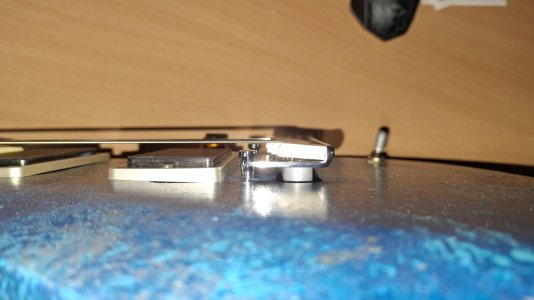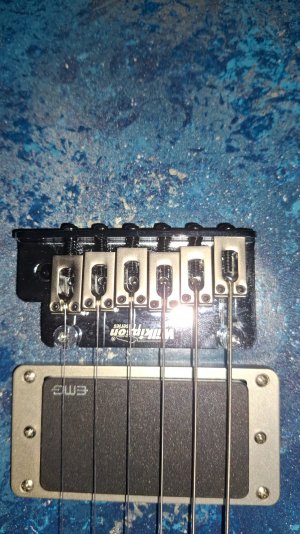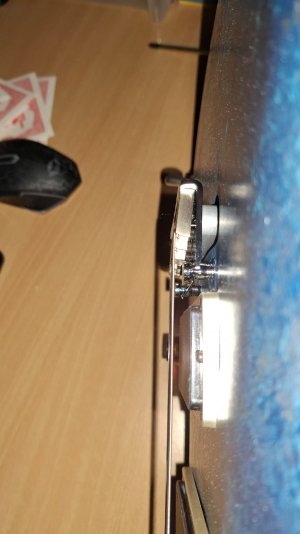BahamaDada
Roadie
- Messages
- 742
Hey @Eagle
I asked you about that 2 point trem the other day (thx a lot again).
So I paint is finished and I put it back together. It's a kit guitar my wife gifted me, so... it was super cheap, but has some "sentimental value".
Problem is, that no matter what I do I run out of intonation space. As you see on the pic the Wilkinson trem (aftermarket) is already dialed back completely and the E (48 gauge) is juuuust in tune.
What can I do here? I guess the post on the thicker side is tilted bc the wood's just shit. Is this FUBAR or do you have any tip or trick here?#
Short edit: Some time ago I tried to fill the original hole with a dowel and super glue and redrilled it. But it will just tilt like that it seems. Should I replace that whole wood area with a hard wood piece?



I asked you about that 2 point trem the other day (thx a lot again).
So I paint is finished and I put it back together. It's a kit guitar my wife gifted me, so... it was super cheap, but has some "sentimental value".
Problem is, that no matter what I do I run out of intonation space. As you see on the pic the Wilkinson trem (aftermarket) is already dialed back completely and the E (48 gauge) is juuuust in tune.
What can I do here? I guess the post on the thicker side is tilted bc the wood's just shit. Is this FUBAR or do you have any tip or trick here?#
Short edit: Some time ago I tried to fill the original hole with a dowel and super glue and redrilled it. But it will just tilt like that it seems. Should I replace that whole wood area with a hard wood piece?




